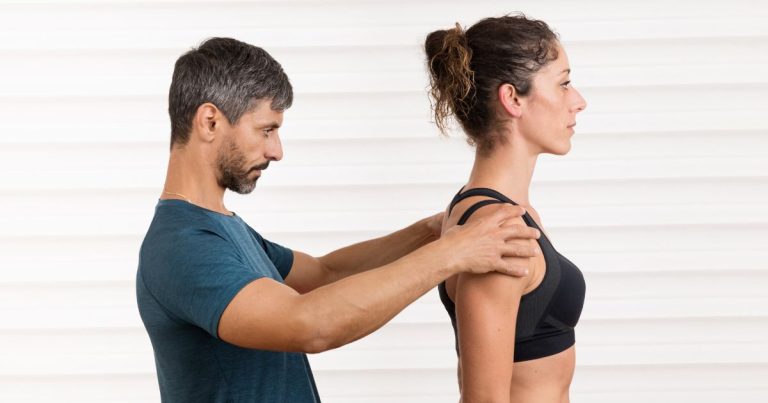If you’ve heard of the Alexander Technique but aren’t exactly sure what it is or how it can help singers, then here’s a quick 101 for you.
In this Alexander Technique 101, Patrick Ardagh-Walter, a professional singer and Alexander Technique teacher details the method’s principles and shares a useful exercise for beginners.
But first, a little background
The Alexander Technique was pioneered by FM Alexander (1869 to 1955), an Australian performer who suffered frequent bouts of laryngitis. When doctors couldn’t cure his vocal problems, Alexander spent hours observing his movements in minute detail.
He concluded tension was to blame and then worked to ‘unlearn’ the unhelpful habitual postures inhibiting his movement. After refining his ‘method’, Alexander taught it to singers, actors and politicians around the world.
Today, millions of people use the technique to manage pain, improve sporting or artistic performance or support pregnancy and childbirth.
Now it’s over to Patrick, who shared this Alexander Technique 101 on the Singing Teachers Talk podcast.
What are the basic principles of the Alexander Technique?
It’s about the relationship between the head and the spinal column and its effect on other parts of the body.
A lot of Alexander’s work was about undoing interference with that mechanism rather than adding anything as a layer on top. It’s a re-education that takes us back to the uncluttered coordination and balance we had as small children. Children have an easy, open use of the body; we’re trying to get back to that kind of freedom.
Another essential principle is psycho-physical unity. There’s no separation of mind or body. Every thought plays out in our nerves and in the muscles that are innervated by those nerves. And every sensation in the body feeds back into our mind.
How Can the Alexander Technique Help Singers?
It clears the deck to allow singing technique to do its job. Often, people seek help because they don’t understand why they’re having difficulty [with their voice]. Sometimes, they’re using too much breath pressure. But they may not understand that because they’ve been doing it for years, and it feels familiar.
Often, there is a narrowing of the base of the throat, the back ribs are collapsing, or the pelvis is pushed forward so that people lock their knees back and pull the chest up. Sometimes, the neck is too tight, or the tongue or jaw gets involved in changing pitch or vowels. These things are very difficult to spot if you’re the person doing them.
Diagnosing with the Alexander Technique
Any Alexander teacher will look at a new student when they come through the door. Of course, we listen to what the student describes. But we also look at how they’re using themselves because that gives us a lot of important clues.
Where do you start when working with singers?
We will always start by bringing some awareness to the head-neck relationship. Often, when people let go of the tension in the neck, they realise that they’re holding onto shoulders or arms, and the letting go will follow. Then the back can start to do its job and support the rest of the organism, the limbs and the head.
I try to take the sound out of the equation for the first steps. We have to get somebody back to being able to exhale and to allow an inhalation without tensing in the neck and throat.
Can you suggest an exercise to get started?
It’s known in Alexander terms as the ‘Whispered Ahh’, although, for me, it’s not whispered; it’s silent.
To start, stand and breathe naturally and find a happy thought. (I think all singers should have a library of memories and sensations to plug into when we need to summon something in ourselves.)
So we’ll cultivate a twinkle of a smile under the eyes, behind the eyes, around the eyes and looking at something in the room. Then, with relaxed cheeks and jaw, touch the tip of your tongue onto the back of your lower front teeth.
Be aware of the feeling of the air coming out your nose and flowing back in your nose – without ever collapsing as you force the air out. Keep yourself long as you send the air out and let the air flow back in. Without topping up your breath, let that Smiling Ahh flow out by gently opening the mouth and letting the jaw fall slightly back and down.
Let the Silent Ahh follow your eyes, and at the end of it, gently bring your lips back together. Wait for the in-breath to happen. Then breathe normally for a little while and repeat. Hopefully, you’ll discover that there’s an awful lot of work that doesn’t need to happen in the ribcage, solar plexus, throat or neck. This exercise sets us up well for starting to use words and pitches.
Learn More
If this Alexander Technique 101 has made you curious to learn more, listen to the full interview with Patrick to discover:
– The difference between the Alexander Technique and Feldenkrais.
– How the transformation his mother experienced – thanks to the Alexander Technique – inspired him to teach.
Lorem ipsum dolor sit amet, consectetur adipiscing elit. Ut elit tellus, luctus nec ullamcorper mattis, pulvinar dapibus leo.




